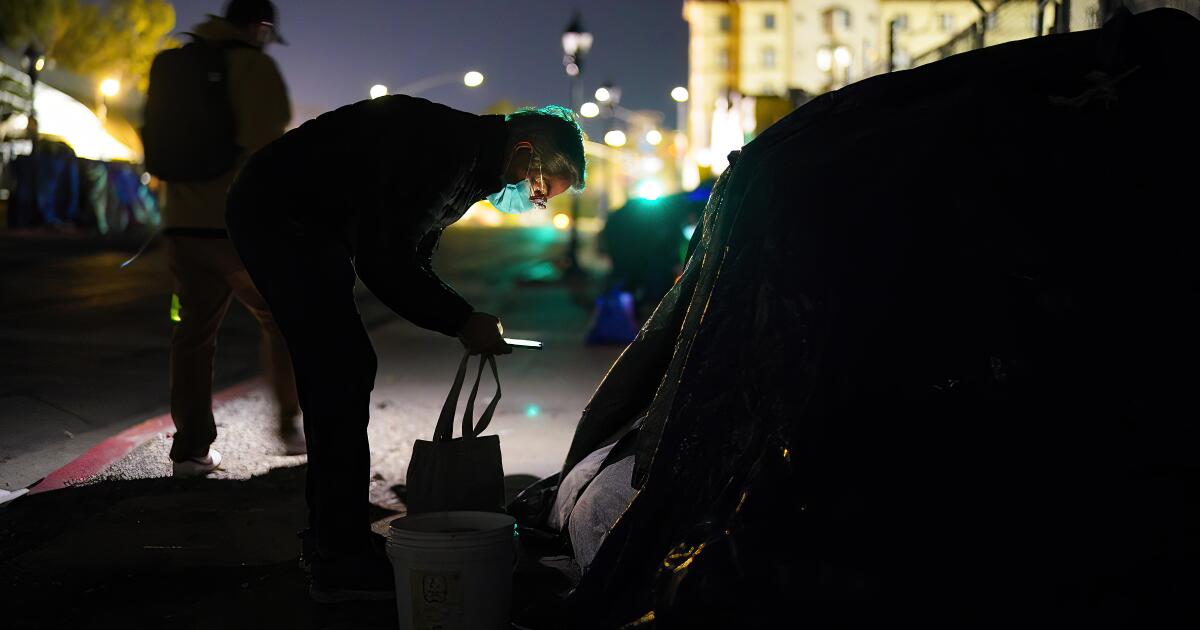

Hundreds of volunteers are still needed later this month for the region’s annual homelessness tally, a key metric used by leaders to make budget and policy decisions.
About 900 people had signed up for the point-in-time count as of last week, according to a spokesperson for the Regional Task Force on Homelessness. Officials hope for around 1,200 on the ground.
The work will take place during the early hours and evening of Jan. 25.
“Every year, San Diegans wonder what they can do to help,” Tamera Kohler, the task force’s president and CEO, said in a statement. Surveying who’s sleeping outside provides “valuable information about those experiencing homelessness while ensuring that our region gets the federal funding it deserves.”
As long as signups continue, the task force is on track to find enough people, representative Jordan Beane wrote in an email.
San Diego County employees can participate while on the clock.
The count, which is required by the federal government, generally begins around 4 a.m. Volunteers serve a variety of roles, including gathering demographic information about the people they find in tents, sleeping bags and vehicles.
This year’s count will include a 6:30 p.m. shift surveying safe parking lots, where people live out of cars, and the city of San Diego’s two new safe sleeping sites, which allow individuals and couples to stay in tents.
Residents may register at sandiego.pointintime.info.
All censuses can miss people, and tracking those without a fixed address is especially tricky. More than a dozen cities and thousands of square miles have to be covered. Something as simple as a locked gate may block access to important land. Bad weather pushes individuals even further out of site.
While the count is one of the most prominent ways to measure the crisis, it’s not the only one.
The task force also tracks how many homeless people ask for help. Those requests are logged in the region’s Homeless Management Information System and inform monthly reports that perhaps give a more up-to-date picture of the crisis.
The most recent report, from November, found more than 1,100 people had lost a place to stay for the first time that month while only 813 homeless people got housing. It was the 20th straight month homelessness grew.
Then there are organizations with their own surveys for specific parts of the region.
The San Diego River Park Foundation, an environmental nonprofit, has for years tracked the number of encampments along waterways. Their data shows that numbers have generally risen since the start of the pandemic.
The Downtown San Diego Partnership checks how many homeless people are in the city’s urban core. That total has plummeted since police began enforcing San Diego’s camping ban.





